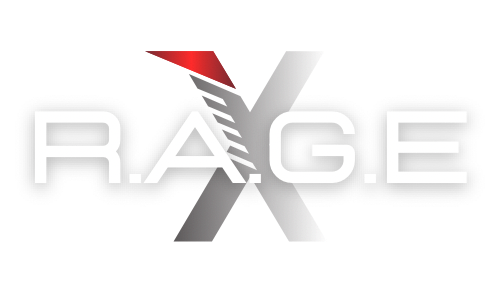The targeted assassinations of Hamas leaders by Israel have been a consistent strategy employed by the Israeli government to disrupt the organization’s leadership and weaken its operational capabilities. Hamas, known formally as the Islamic Resistance Movement, has been a central actor in the Israeli-Palestinian conflict, particularly through its military wing, the Izz ad-Din al-Qassam Brigades. Israel considers Hamas a terrorist organization responsible for numerous attacks, including suicide bombings and rocket launches, which have resulted in civilian and military casualties. This backdrop has led Israel to adopt a policy of preemptive strikes against Hamas leadership as a means of self-defense and deterrence.

Over the years, these targeted killings have claimed the lives of key figures within Hamas, including founding members and senior military and political leaders. Notable assassinations include Yahya Ayyash, known as “The Engineer,” who was killed in 1996 by a bomb hidden in a mobile phone, and Ahmed Yassin, the spiritual leader and founder of Hamas, who was assassinated in 2004 by an Israeli airstrike. Each of these operations has not only targeted individuals but also aimed to disrupt Hamas’s organizational structure and deter future attacks.
The implications of these assassinations are far-reaching. They often result in immediate escalations of violence, including rocket fire from Gaza into Israeli territory, leading to broader military confrontations. Moreover, these targeted killings have international ramifications, as they frequently involve cross-border operations, such as the assassination of Mahmoud al-Mabhouh in Dubai in 2010, which strained Israel’s diplomatic relations with other nations. The deaths of these leaders also provoke significant internal and external reactions, ranging from public mourning and protests within Palestinian territories to international debates on the legality and morality of targeted assassinations.
Despite the controversies and ethical questions surrounding these operations, Israel maintains that they are necessary for national security. The Israeli government argues that eliminating these leaders prevents future attacks and saves lives. However, critics argue that such actions can exacerbate tensions and lead to cycles of retaliation, undermining long-term peace prospects. This complex and contentious aspect of the Israeli-Palestinian conflict continues to shape the geopolitical landscape of the region, influencing both immediate military strategies and broader political negotiations.
Assassinated Hamas Leaders by Israel:
1. Yahya Ayyash (“The Engineer”)
Date: January 5, 1996
Location: Gaza
Details: Yahya Ayyash was a key figure in Hamas, known for his expertise in explosives, earning him the nickname “The Engineer.” Ayyash played a critical role in designing and executing several bombings against Israeli targets during the 1990s. He was assassinated using a bomb concealed in a mobile phone, an operation attributed to the Israeli Security Agency (Shin Bet). His death marked a significant blow to Hamas’s operational capabilities.

2. Khaled Mashal
Date: September 25, 1997
Location: Amman, Jordan
Details: Khaled Mashal, a senior political leader and one of the founders of Hamas, survived an assassination attempt by Mossad agents in Jordan. The agents attempted to poison him, but Mashal was saved after international pressure forced Israel to provide the antidote. This incident led to heightened diplomatic tensions and the eventual release of Hamas’s spiritual leader, Sheikh Ahmed Yassin.
3. Salah Shehadeh
Date: July 22, 2002
Location: Gaza
Details: Salah Shehadeh was a founding member of Hamas’s military wing, the Izz ad-Din al-Qassam Brigades. Known for his role in orchestrating attacks against Israel, Shehadeh was targeted in an Israeli airstrike that also killed 15 civilians, including his family members. The strike was part of Israel’s broader strategy to weaken Hamas’s military leadership.
4. Ismail Abu Shanab
Date: August 22, 2003
Location: Gaza
Details: Ismail Abu Shanab was a co-founder of Hamas and a senior political leader known for his advocacy of a pragmatic approach within the organization. He was killed in a missile strike on his car, an action that led to increased tensions and retaliatory actions from Hamas.
5. Ahmed Yassin
Date: March 22, 2004
Location: Gaza
Details: Ahmed Yassin was the spiritual leader and one of the founders of Hamas. Paralyzed from the neck down, Yassin was a symbol of resistance for Hamas supporters. He was assassinated by an Israeli airstrike as he exited a mosque, an event that led to widespread unrest and condemnation from the international community.

6. Abdel Aziz al-Rantisi
Date: April 17, 2004
Location: Gaza
Details: Al-Rantisi, who succeeded Yassin as the leader of Hamas in Gaza, was known for his hardline stance against Israel. He was killed in an Israeli airstrike less than a month after Yassin’s assassination. His death further escalated the conflict between Israel and Hamas.
7. Izz ad-Din Sheikh Khalil
Date: September 26, 2004
Location: Damascus
Details: Sheikh Khalil was a senior Hamas operative involved in planning military operations. He was killed by a car bomb in Damascus, an assassination attributed to Israeli intelligence. His death highlighted the reach of Israeli operations beyond Gaza and the West Bank.
8. Nizar Rayan
Date: January 1, 2009
Location: Gaza
Details: Nizar Rayan was a senior leader known for his dual role in both the political and military wings of Hamas. He was killed in an Israeli airstrike that also claimed the lives of his wives and children. Rayan was noted for advocating for suicide attacks against Israel.
9. Said Siyam
Date: January 15, 2009
Location: Gaza
Details: Said Siyam was a senior Hamas official who served as the Interior Minister after the group’s electoral victory in 2006. He was a key figure in Hamas’s governance and security apparatus. His assassination was part of Israel’s efforts to dismantle Hamas’s leadership during Operation Cast Lead.
10. Mahmoud al-Mabhouh
Date: January 19, 2010
Location: Dubai
Details: Al-Mabhouh was a senior military commander involved in smuggling arms into Gaza. He was found dead in a Dubai hotel, with suspicions pointing towards a Mossad operation involving agents using fake passports. This assassination caused a significant diplomatic fallout between Israel and several countries.
11. Ahmed Jabari
Date: November 14, 2012
Location: Gaza
Details: Jabari was the deputy commander of the al-Qassam Brigades and played a central role in Hamas’s military activities. His assassination marked the beginning of Operation “Pillar of Defense” and was a significant blow to Hamas’s military leadership.
12. Mohammed Abu Shamala, Raed al-Attar, and Mohammed Barhoum
Date: August 21, 2014
Location: Rafah, Gaza
Details: These three senior commanders were killed in an Israeli airstrike during the 2014 Gaza conflict. They were key figures in the al-Qassam Brigades, responsible for various military operations against Israel.
13. Saleh al-Arouri
Date: January 2, 2024
Location: Beirut, Lebanon
Details: Al-Arouri, the deputy leader of Hamas’s Political Bureau, was killed in an airstrike attributed to Israel. Al-Arouri was known for coordinating operations in the West Bank and had strong ties with Hezbollah.

14. Ismail Haniyeh
Date: July 2024
Location: Tehran, Iran
Details: Haniyeh was killed in an airstrike while staying at a guest house associated with the IRGC. His death further underscored the close ties between Hamas and Iran and represented a significant escalation in Israeli actions targeting Hamas leadership abroad.

These targeted killings have been a strategic component of Israel’s broader effort to disrupt and dismantle Hamas’s leadership and military capabilities, often leading to heightened tensions and retaliatory actions.




